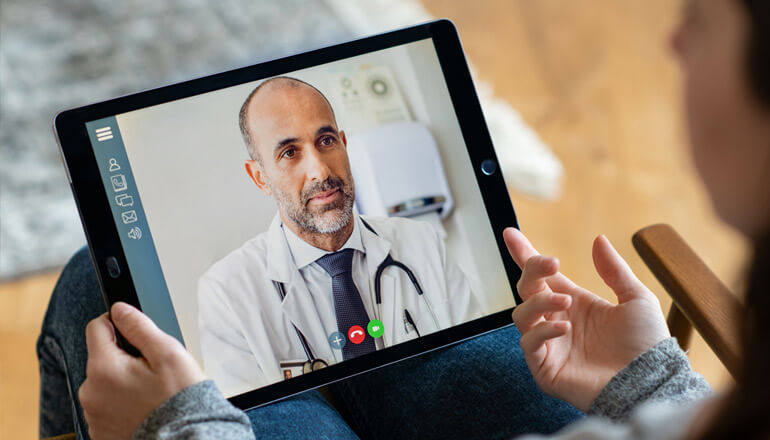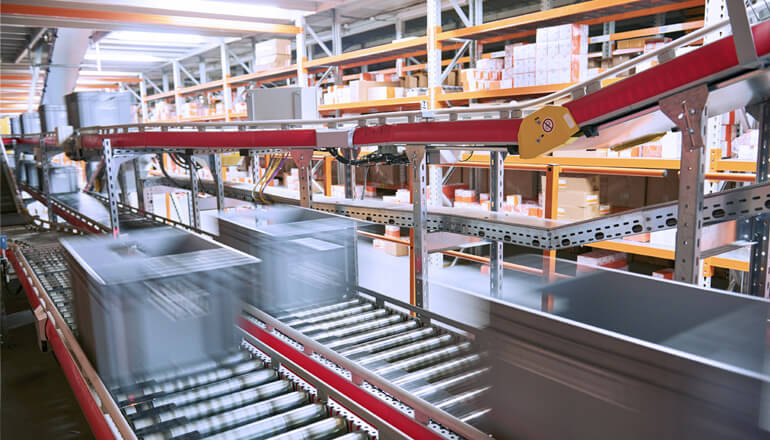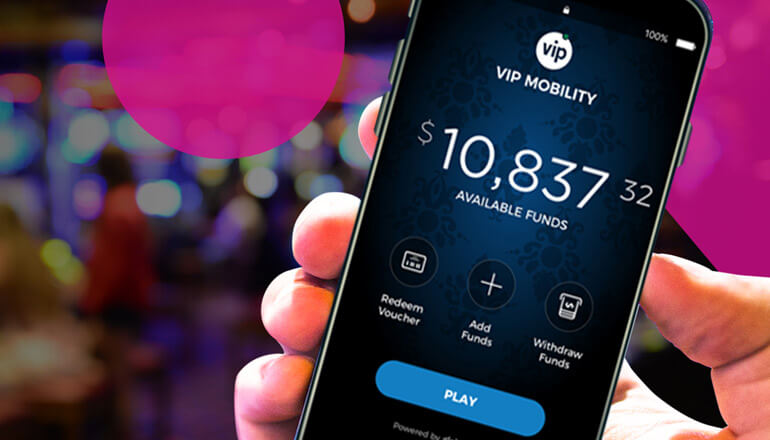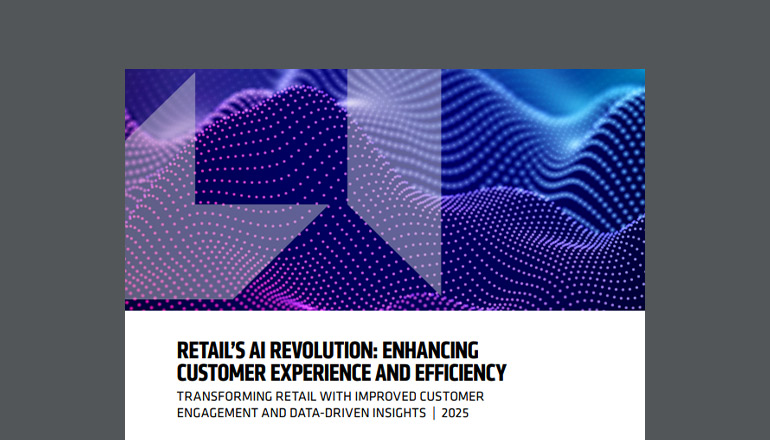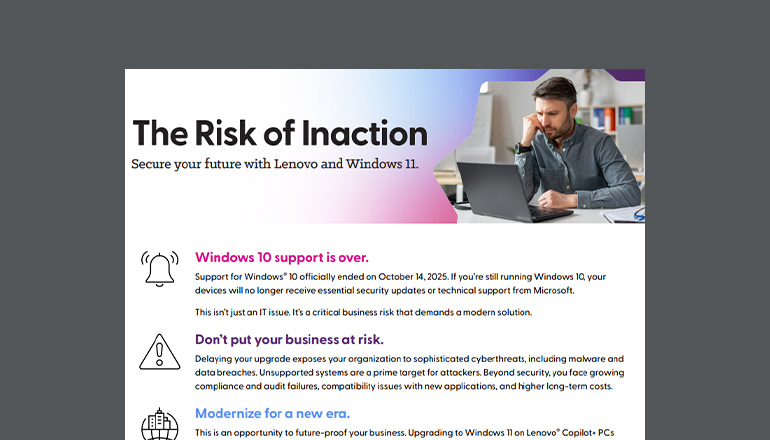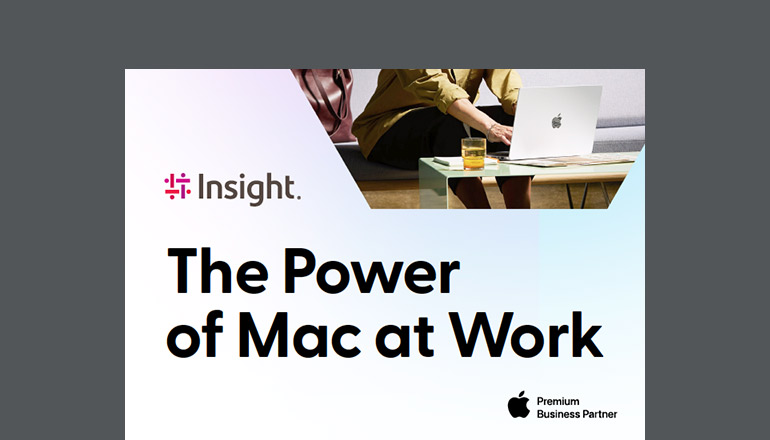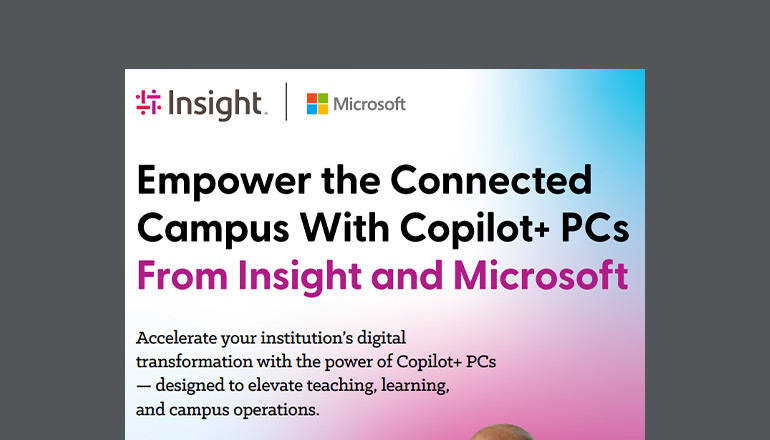Article The Future of Business in a Post-COVID World Through the Eyes of a CEO
By Ken Lamneck / 18 Jun 2020 / Topics: Modern workplace Customer experience Featured Digital transformation

If we had told our clients in January that in a few weeks we’d all be working from home, they would have laughed and told us there was no way that was going to work.
I think most people are amazed at what they can do when push comes to shove — and there‘s no doubt that all of us got shoved, hard.
Those first few weeks of lockdown were pretty ugly. That might have been because so many of us were working long days and nights, trying to solve problems we never thought we’d have. I’d turn on a sports show and cringe at the makeshift home setup and inconsistent connectivity, not to mention the complete lack of sports activity to talk about.
But within a few days or weeks they figured it out, as did many others. Call centers moved to homes, professional services pivoted to video consultations and so on.
The rush to respond is over — take a breath.
It’s clear now that most of the quick adjustments we had to make as temporary solutions aren’t going to be temporary. There will be residual impacts that affect not just how we do business, but also our general outlook toward the world.
I remember my grandparents talking about the Great Depression and what their families went through. It stayed with that whole generation and changed their outlook on the world quite a bit. It’s why my grandmother would spoon leftover mashed potatoes from the dinner plates into a Tupperware — you didn’t let food go to waste.
Following generations would face their own life-altering crises: 9/11, the financial crisis of 2008 and now, COVID-19.
Each event reshaped our society. Faced with different challenges each time, we adapted and embraced new solutions and lifestyles, from rideshares to Millennial-friendly investing tools.
With the impacts of COVID-19, we experienced a strange dichotomy. Almost overnight, everything closed up and our busy lives came to a screeching halt. But simultaneously, imperceptibly, so many things accelerated.
The upward trendlines for adopting work from home options, the cloud, e-commerce, telehealth — and so much more — all skyrocketed. For years we’ve been steadily driving toward the future of business. And then quite suddenly, ready or not, we’re here.
For years we’ve been steadily driving toward the future of business. And then quite suddenly, ready or not, we’re here.
People first, digital second
I've been an executive sponsor for many of our Insight clients. Building and maintaining meaningful relationships meant that I was often on an airplane, flying around the country for in-person meetings. While those in-person connections are invaluable, the amount of time spent traveling is considerable.
Transitioning to collaboration technologies and video formats has allowed me to continue those connections and, in some cases, made it even easier and more frequent. What’s been interesting to experience is the widespread use of video. Previously, I’d often have phone conversations with clients — many of them weren’t even equipped for video calls. But now that they’ve been forced to adopt digital channels, our phone calls have been replaced with video calls, which make those conversations all the more personal.
There's no question that in a post-COVID world, all businesses will need to start moving to a more digital way of operating. Technology will certainly be at the forefront as we begin to bring workers back safely.
At the onset of the pandemic, Insight’s digital innovation experts recognized an immediate need for creative technology solutions to help organizations sustain productivity while ensuring employee health and safety. Our teams had already developed a flexible Internet of Things (IoT) Connected Platform used to help our clients gain a unified view of their data from a wide range of devices and sensors. We tailored this technology to function across a variety of use cases — from restaurants leveraging sensors to monitor equipment and prevent food spoilage to school campuses applying sound triangulation and automated alerts to enhance safety communications.
A global health risk certainly created a new challenge — but the solution didn’t need to be built from scratch. Digital innovation doesn’t have to entail wholly disruptive, throw-everything-away-and-start-over experiences. On the contrary, innovation happens in increments, iterations and pivots demanded by what’s happening in the world.
Working together with some of our partners, we adapted this framework to create our Connected Platform for Detection and Prevention, leveraging smart technologies and sensors to support measures for social distancing, sanitation and more. By building on an existing concept, we’ve been able to rapidly develop and deploy a new solution that’s helping us — and our clients — overcome the next set of challenges: bringing people back to workplaces and public spaces, safely.
Top technologies companies plan to invest in to help expedite a return to normalcy:
- 58% smart personal hygiene devices
- 36% contactless sensors
- 36% smartphone tracking
- 35% contact or no-contact infrared thermometers
That being said, not all workers will be shutting down their home office any time soon. The workforce is poised to be increasingly hybrid with workforces either splitting time between home and the office or continuing with groups of workers entirely remote.
Workers seeking remote flexibility may see more employer options — but they also face greater competition now that businesses can recruit top talent beyond the limits of proximity while also eliminating relocation expenses. The right talent for a job is more readily available when it can be accomplished remotely.
The future of business isn’t just about where work gets done, but also how. Remote services — particularly for IT — isn’t a new idea, but like so many other IT trends, you can expect a rampant increase and expansion in this area.
The future of business isn’t just about where work gets done, but also how.
In today’s uncertain environment, we're already seeing some of the challenges of on-site work by outside vendors. Although this moment in time is unique, there’s still a growing desire to build capabilities that allow for work to be conducted remotely. The future of IT includes increased zero-touch deployment, IT self-service and hybrid IT teams made up of both internal (on-site) and contractual (remote) professionals.
Other businesses should examine their service offerings and look for ways where technology can facilitate remote work. For example, physical equipment inspections could be replaced by IoT sensors that automatically report anomalies. On the other end of the spectrum, we’re witnessing substantial adoption and advancements in telehealth. In fact, Forrester projects virtual health visits will top one billion this year.
Bring your people with you during change.
The abrupt changes every business had to make no doubt exposed a number of vulnerabilities you may have been blind to, from an insufficient Business Continuity Plan (BCP) to security gaps. You might have also discovered that the tools and software investments you’ve made aren’t being maximized due to a lack of training and/or adoption by end users.
Effective Organizational Change Management (OCM) is a critical component for successful digital transformation. What’s clear now is that OCM can’t be limited to digital transformation alone.
One of our survey respondents admitted, “…while we've made a lot of cloud collaboration software available to our organization, many users were not using it regularly or well-trained with it. We need to be more proactive and work on enforcing education on new software we roll out to ensure our staff is able to use it seamlessly.”
The reality is, you can’t drop people into a new experience or equip them with new tools and expect them to know how to thrive. Working from home seems like a simple enough transition, once you get the technical requirements out of the way. However, organizations are finding out it takes more than technology to help people be effective. And this isn’t limited to individuals mastering collaboration tools. Many of us have never had to manage teams from a distance, and that requires a different set of soft skills.
Here are some considerations we’ve asked ourselves along the way:
- How do we educate our people to work from home more efficiently and effectively?
- How do we train people to be effective managers over remote teams?
- How do you support your teams and ensure work/life balance?
- How do you measure productivity or accountability?
- And, most importantly, how do you make sure people feel connected to other teammates and to the company?
The reality is, you can’t drop people into a new experience or equip them with new tools and expect them to know how to thrive.
At Insight, we're fortunate to have OCM solutions built into our business. We have teammates who specialize in remote training and learning. Because of this, we were able to make resources readily avilable for our teams. That's a unique ability. Most organizations don't have that skill set in-house, but it's worth the time investment to seek out htose resources to ensure your employees have the proper skills and training to do their job.
A mere 13% of IT leaders felt their organization was “extremely prepared” to handle IT business changes when COVID-19 arose, and when asked how prepared they feel now to handle a similar crisis in the future, only 20.5% say “extremely prepared.”
Which tells us one thing: There’s still a lot of work to be done.
Protect your business today.
First and foremost is the well-being of your teammates and their families. Secondarily, turn your focus to your client base and assess how well you’re supporting them and their changing needs. Once you have those two focus points addressed, look at the business as a whole. You might have had to make, or are still making, hard decisions to address the financial health of your organization. Make sure your company is protected now while also being prepared for opportunities that are waiting on the other side. Don’t reduce to the point where you cut out any potential to grow when this climate of uncertainty does change — because it will. Put yourself in a position for rebound.
Focus on security. Some companies have learned the hard way that as you become more remote, you open yourself up for more security risks. Cybercrime is at an all-time high. When business is financially threatened, it’s tempting to scale back on solutions and services — security is not the place to make rollbacks. The financial risks of a cyberattack far outweigh the potential savings. In the weeks following our teams moving fully remote, we scrutinized our own security posture and continued to roll out new or tightened security measures. We also send regular security training and reminders to our teammates to stay vigilant.
Make sure your company is protected now while also being prepared for opportunities that are waiting on the other side.
Enable an elastic workforce.
Even after employees return to the workplace, for many industries, remote work will perdure. It requires the right collaboration platform, secure remote access points, proper equipment and special training (as we discovered).
If and when employees do return to the workplace, they need to have confidence that they’re returning to a safe, protected and healthy environment. Don’t cut corners when it comes to employee health and safety. To the best of your abilities, plan for an elastic workforce that allows workers the flexibility to work from anywhere. In this moment, we’re focused on remote work as a solution to the global pandemic, but the reality is that working from home is a great solution for many other uncontrollable situations, such as extreme weather, high pollution advisories or allowing parents to stay home with a sick child.
Orient to digital.
The world will be, without question, more digital. I don't think anyone, or any company, will ever regret becoming more digitally focused and oriented. If and when you can invest in digital innovation, do, because you can bet your competition will. In the IT space, we beat the eminency of disruption like a drum. Continuously innovate is our mantra, because it’s the only way to ensure resiliency. Challenges invoke tremendous creativity — but once a great idea gets noticed, it will get copied. Stay nimble and prepared to innovate around every corner.
To that end, prioritize a modern infrastructure. Digital transformation can’t happen on outdated hardware. There are cost effective ways to modernize your technology environment, including financing arrangements or subscription models to avoid large capital investments.
Take advantage of the public cloud, which provides a lot of flexibility and agility. During the swift transition to work from home, many organizations turned to the cloud to get things up and running very quickly. We were among them. Insight is a global company and we had teammates in Manila who were not equipped to work remotely. In fact, they didn’t even have laptops. So when our IT teams in the U.S. needed to quickly get those teammates up and running — securely — we employed a Microsoft Virtual Desktop Infrastructure (VDI) solution. This was very simple for us to do from a vantage point of doing it in the cloud first.
Final thoughts
We should all be proud of what we were able to accomplish in such a short amount of time. We’re certainly proud of our teams at Insight; They were able to solve challenges to quickly get our own teammates set up remotely while simultaneously helping our clients overcome a plethora of roadblocks to do the same. Everyone had the rug pulled out from beneath them. Acknowledge the work, the hard choices, the flexibility and dexterity from teammates, the graciousness and trust from clients and customers — together, we’ll emerge stronger on the other side.


